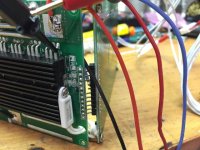markw
10 W
NeilP, thanks for your reply here, answered all the concerns I had.
Some updates here, looks like the MOQ for the D170 is actually 1 which lends itself as a decent option. The salesperson (not Henry, but Ada) has been very easy to work with. I have some minor tweaks that I think would be good via the criteria that they sent over via the datasheet. Let me know what you think. Side question: these things have IC right? Are they just programming these parameters in or are they truly based on the components installed only? If the former, what's the point of programming the amps down?
DATASHEET

Maximal continuous discharging current: 100A - - - (just for the additional overhead)
Over charge detection voltage: 4.24v - - - (base 4.28 seems pretty high...)
Over discharge detection voltage 3.30v - - - (when my LiPo balance charger does charge/discharge cycles, it usually only goes to 3.30...)
Over discharge release voltage 3.30v - - - (Should release be slightly higher here to accommodate for voltage sag under load? )
For those who've ordered these before, do they come with the sense wire JST plugs or should I request that? I'd very much rather spice wire connections to a premade plug than attempt to make a quality one.
Thanks again for the help, excited to get this thing ordered.
Some updates here, looks like the MOQ for the D170 is actually 1 which lends itself as a decent option. The salesperson (not Henry, but Ada) has been very easy to work with. I have some minor tweaks that I think would be good via the criteria that they sent over via the datasheet. Let me know what you think. Side question: these things have IC right? Are they just programming these parameters in or are they truly based on the components installed only? If the former, what's the point of programming the amps down?
DATASHEET

Maximal continuous discharging current: 100A - - - (just for the additional overhead)
Over charge detection voltage: 4.24v - - - (base 4.28 seems pretty high...)
Over discharge detection voltage 3.30v - - - (when my LiPo balance charger does charge/discharge cycles, it usually only goes to 3.30...)
Over discharge release voltage 3.30v - - - (Should release be slightly higher here to accommodate for voltage sag under load? )
For those who've ordered these before, do they come with the sense wire JST plugs or should I request that? I'd very much rather spice wire connections to a premade plug than attempt to make a quality one.
Thanks again for the help, excited to get this thing ordered.




